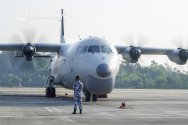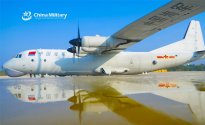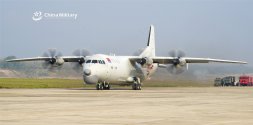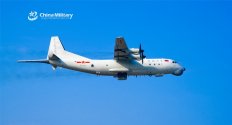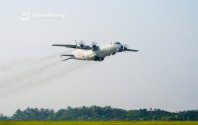The Soviets used to send SSNs to SSBN deployment areas. Not really an escort as you would call it since there is no formation but the intention was clearly protecting SSBNs. Sometimes they were pre-positioned on the route the SSBN will use to detect trackers.Does SSBN's actually use SSN as escorts in reality? It seems dangerous since you have very little coordination with the other submarine unless you expose yourself by going to periscope depth. The whole idea of a SSBN is to be undetected so I don't quite get the SSN "Guard" role.
You are using an out of date browser. It may not display this or other websites correctly.
You should upgrade or use an alternative browser.
You should upgrade or use an alternative browser.
PLAN ASW Capability
- Thread starter shen
- Start date
If a Soviet SSN found something in the patrol area, how can they know it’s not their own SSBN?The Soviets used to send SSNs to SSBN deployment areas. Not really an escort as you would call it since there is no formation but the intention was clearly protecting SSBNs. Sometimes they were pre-positioned on the route the SSBN will use to detect trackers.
won’t the pre-positioned SSNs leak whereabouts of SSBNs?
One way that I can guess is that they would know the acoustic signature of their own ships, so anything not their own is a hostile. They just won't know what hostile in particular it was unless they had previous acoustic signatures stored.If a Soviet SSN found something in the patrol area, how can they know it’s not their own SSBN?
won’t the pre-positioned SSNs leak whereabouts of SSBNs?
Hendrik_2000
Lieutenant General
China research sea glider to find sub
The Dolphin Project
While the advantages of gliders seem obvious, there are also many technical challenges that must be overcome before they can be used in ASW. Since 2014, the PLAN Submarine Academy, working in conjunction with scientists and engineers from Tianjin University and the Qingdao Pilot National Lab for Marine Science and Technology have methodically surmounted many of these challenges and now possess a capable prototype glider, the “Dolphin,” which has already undergone several rounds of testing in the South China Sea.
The Dolphin is based on the glider developed by researchers at Tianjin University. Like most sea gliders, the Haiyan is a tubular robot with wings and a visible antenna. However, it is somewhat unusual in that it is equipped with a small propeller, if needed to surface quickly in the event of a potential submarine contact. Chinese oceanographers have already deployed Haiyan gliders within the first island chain and beyond. A specially designed Haiyan variant () is capable of diving to tremendous depths, including the . Another variant () has been built for greater endurance, purportedly up to five months of continuous operations.
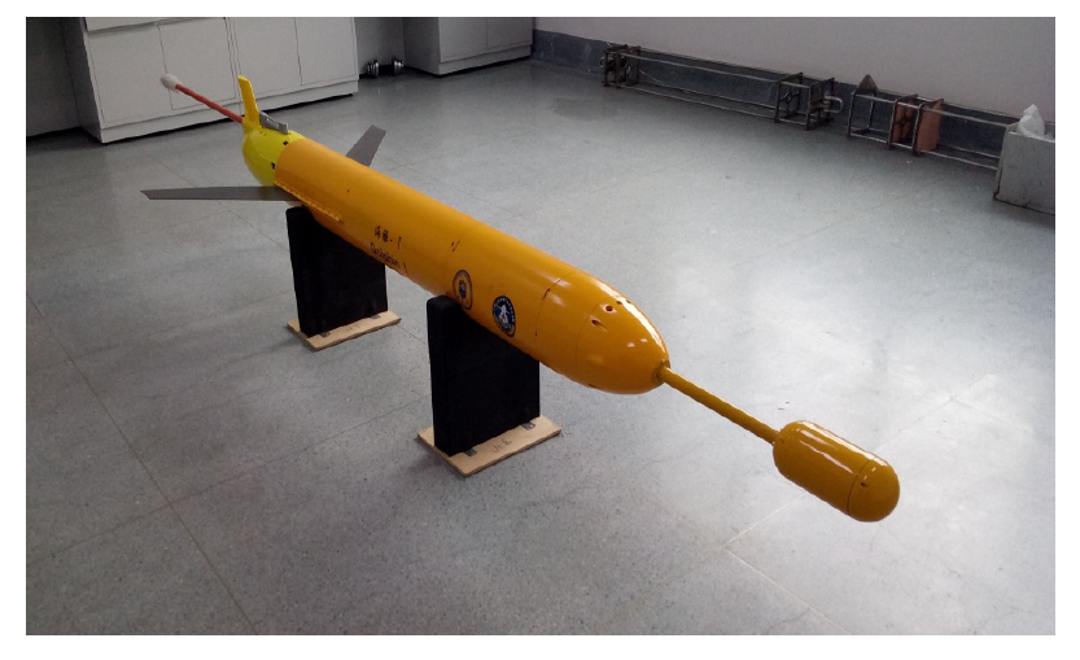
The Dolphin Project
While the advantages of gliders seem obvious, there are also many technical challenges that must be overcome before they can be used in ASW. Since 2014, the PLAN Submarine Academy, working in conjunction with scientists and engineers from Tianjin University and the Qingdao Pilot National Lab for Marine Science and Technology have methodically surmounted many of these challenges and now possess a capable prototype glider, the “Dolphin,” which has already undergone several rounds of testing in the South China Sea.
The Dolphin is based on the glider developed by researchers at Tianjin University. Like most sea gliders, the Haiyan is a tubular robot with wings and a visible antenna. However, it is somewhat unusual in that it is equipped with a small propeller, if needed to surface quickly in the event of a potential submarine contact. Chinese oceanographers have already deployed Haiyan gliders within the first island chain and beyond. A specially designed Haiyan variant () is capable of diving to tremendous depths, including the . Another variant () has been built for greater endurance, purportedly up to five months of continuous operations.

The importance of ASW aircraft cannot be understated.
They also need Y-9Qs and more Z20Fs into service quickly. I think about 100 Y-8/9Qs + 200 Z20Fs is really needed to deal with the various threats.
Interesting point in there that you need aircraft carrier to protect Y-8/9Q while it's doing its job. I tend to agree with that. If you want to expand your operation to East of Taiwan into Philippine sea, then it's too far for PLAAF to be able to really protect them, so you need a carrier group out there to do so.
They also need Y-9Qs and more Z20Fs into service quickly. I think about 100 Y-8/9Qs + 200 Z20Fs is really needed to deal with the various threats.
Interesting point in there that you need aircraft carrier to protect Y-8/9Q while it's doing its job. I tend to agree with that. If you want to expand your operation to East of Taiwan into Philippine sea, then it's too far for PLAAF to be able to really protect them, so you need a carrier group out there to do so.
Same thoughts.The importance of ASW aircraft cannot be understated.
They also need Y-9Qs and more Z20Fs into service quickly. I think about 100 Y-8/9Qs + 200 Z20Fs is really needed to deal with the various threats.
Interesting point in there that you need aircraft carrier to protect Y-8/9Q while it's doing its job. I tend to agree with that. If you want to expand your operation to East of Taiwan into Philippine sea, then it's too far for PLAAF to be able to really protect them, so you need a carrier group out there to do so.
Does anyone has recently updated figures on the number of maritime patrol aircrafts that the PLANAF could muster?
Because from the source that I could find (), it is said that PLANAF, by late 2020, could only muster 50 ASW aircrafts.
Refer to my previous post in the China's SCS Strategy Thread, post #7874. There, I have noted that the JMSDF alone can muster more than 90 ASW aircrafts, alongside ASW helicopters of the JMSDF. Plus other ASW aircrafts and helicopters from the ROKN, RAN and also the USN, I believe the advantage held by the opposite side is pretty glaring.
That is a sky-and-earth type of disparity across the two sides of the Taiwan Strait and East China Sea we are having right now, which is just absolutely appaling.
And here, we are talking about the PLANAF having to guard practically both the China Seas + the Western Pacific, up until somehwere between Taiwan and Guam, for that matter. With only 50 ASW aircrafts + ASW helicopters.
So yes, China needs to massively expand her fleet of ASW aircrafts and ASW helicopters ASAP, centered around the Y-8Q, Y-9Q and Z-XX platforms, and maybe newer C919s in the future once the bottleneck against its key technology can be broken. Furthermore, with the newer UCSVs that China is starting to roll out, they can specialize some of those USCVs into unmanned ASW units working together in a network spread out across dozens or even hundreds of nautical miles.
I believe this can help China to temporarily plug her ASW capability gap while getting her ASW airborne fleet to get mature and seasoned in hunting the submarines of the US-&-Lackeys Co.
Last edited:
Based on the serial numbers that Huitong's site has, my guess is somewhere from 25 to 30. Not at JMSDF level, but significantly better than what they had back when I stopped following things around 2017.Does anyone has recently updated figures on the number of maritime patrol aircrafts that the PLANAF could muster?
Yes, submarine and ASW have long been an obvious weak spot for PLAN.Refer to my previous post in the China's SCS Strategy Thread, post #7874. There, I have noted that the JMSDF alone can muster more than 90 ASW aircrafts, alongside ASW helicopters of the JMSDF. Plus other ASW aircrafts and helicopters from the ROKN, RAN and also the USN, I believe the advantage held by the opposite side is pretty glaring.
I see Y-8Q similar to China's first generation AWACS KJ-200. Y-9Q hopefully will be like KJ-500 and be mass produced in larger numbers. Turbofan engine MPAs are not ideal because they move too fast. You want to give your MAD boom a chance to detect irregularities and not fly too far away from sonobuoys. As for Z20F, that's just a matter of balancing army need with navy. If they can produce 40 Z-20s a year, then navy will get its fair share. Listening to the recent shilao podcast, it was obvious that the people they talk to know that Z-20s and Y-8/9Q are hugely important in this. They didn't think too highly of 054A/056 TAS finding and catching up to nuclear submarines. Virginia class subs are such a huge threat to PLAN.So yes, China needs to massively expand her fleet of ASW aircrafts and ASW helicopters ASAP, centered around the Y-8Q, Y-9Q and Z-XX platforms, and maybe newer C919s in the future once the bottleneck against its key technology can be broken. Furthermore, with the newer UCSVs that China is starting to roll out, I believe this can help China to temporarily plug her ASW capability gap while getting her ASW airborne fleet to get mature and seasoned in hunting the submarines of the US-&-Lackeys Co.
I applaud PLAN for trying to be innovative and use modern technology of UUVs, networking and AI to solve this problem. Not too different from using manned/unmanned teaming and dispersed sensors to find VLO aircraft.
Note how these UUVs with much longer ranged sonar can operate 30 days in the water and can just sit there between 1st and 2nd island chain. That's the difference betweeen being restricted to north of Spratley to be able to operate all of SCS. Similarly, being able to operate close to Guam and Palau. This HSU001 design is quite interesting. Not particular capable by itself. Unmanned systems are always more powerful when operating in tandem with other manned/unmanned platforms and using advanced communication/AI.
It looks like they are putting a lot of investment into these small unmanned system that are very cheap. So if they get discovered and attacked, it's not the end of the world. In fact, a SSN might not even want to take a shot at these things and give away its position.
I think this is the important part to consider
I'm willing to bet as they spend more time on this and put more gliders and UUV/AUVs into SCS and westpac, they will get better and better at tracking submarines. AI is going to improve at much faster iteration than submarine quieting technology ever could. Back in the day, ASW teams rely on years of experience to hunt and find submarines. Now with AI, it will be able to learn to analyze data and find irregularity way faster than human operators ever could. Again, they need time to deploy more of these UUVs and build up libraries and for AI to learn and get better. Real world data for AI is important and there will not be a shortage of USN/RAN/JMSDF subs that operate around these waters.Trends among PLAN research publications suggest that it is building signature libraries for undersea target detection and recognition, and several PLA units have awarded research contracts related to deep learning-based image recognition and target identification systems for undersea vehicles. In particular, students and researchers at HEU have pioneered an AI-based “seabed image mosaic system” for sonar image processing. Undersea target recognition systems like this could prove useful in autonomously identifying and interacting with sea floor infrastructure and other submarine vehicles.

